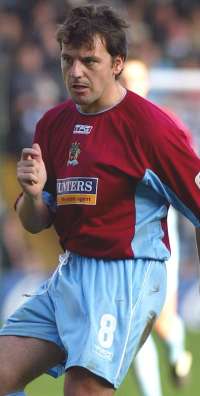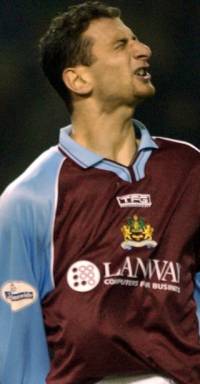The club have cashed in to the tune of £2.75 million on two prize assets – 
One hundred and fifty grand came our way thanks to Sky’s persistence with the tie against Liverpool, and nineteen thousand souls will certainly have contributed healthy gate receipts to the balance sheet, even if the club did incur costs following the postponement. Another £100k is banked in prize money, and then comes the added bonus of an almost certain sell out against our good friends from Ewood on the twentieth – with another quarter of a million guaranteed from the Beeb.
Count it all up, and we’ll be talking upwards of three and half million pounds which have come the club’s way in the past four and a bit weeks. The last time we got such a dramatic injection of cash was the rights issue that following Barry Kilby’s election as chairman in 1999. Whatever the rights and wrongs of the transfers largely responsible for that windfall, it’s important that the opportunity represented by that money is not wasted.
The money injected nearly six years ago was squandered long ago, along with whatever we received from ITV Digital. That isn’t to suggest it was spent wholly unwisely – the uncontroversial priority back then was getting promotion to this division as soon as possible, and plenty was spent in fulfilling that aim. Yet the feeling persists that, perhaps, having won that promotion, too much of the remainder was frittered away carelessly, on transfer fees and wages, when it might have been better invested in giving the club a sound long term foundation.
That undoubtedly important promotion aside, we have little to show for that money now. Along with the ITV digital money, it almost bought a dream, but that short term thrill damn nearly sunk us in the end. For reasons not the fault of the club alone, the dream turned sour, and we were left with a host of lucrative contracts we could barely afford to honour. The youth system didn’t improve. Nor did the training facilities. The marketing operation of the club moved forward only modestly. All things which, with hindsight, might have proved more practical investments than the likes of Dimi Papadopoulos.
This time, a little more discretion might be wise. Certainly, some money should be made available for team strengthening – I preached two weeks ago about the need to bring new blood in, if only to give supporters a reason to believe in the club’s ambition come the spring, and that was before Chappy was sold. But we should be cautious. We are now, for the first time since Stan’s side was making its assault on the upper reaches of this division, flush with cash. To throw good money away on inadequate signings, or to throw too much away on over-inflated transfer fees, would be a monumental folly.
The emotive reaction to the sale of Richard Chaplow was indicative of the instinct of most football fans to take their homegrown talent to heart. In his case, it was probably exaggerated by the fact his like hadn’t been seen at Turf Moor for close to twenty years. That in itself is a sad fact for a club with traditions such as ours, and it is something the club has, I’m reliably informed, begun to address. Yet the standard of the facilities at the club is woefully substandard. We might have good coaches these days, and the kids might have potential, but unless we provide the tools with which to shape that talent, we will struggle to compete even with clubs well below our level.
This applies equally to the first team, whose Gawthorpe training base, once the envy of clubs across the land, now shows its age. Steve Cotterill has stated repeatedly his intention to address this problem, and it is to be hoped he stays true to his word. Oh, and we already know that we need a new pitch at the Turf, too.
It is unlikely that the sums of money available at this moment in time will buy academy status, or state of the art facilities. It is merely a case of beginning to rectify the problems caused by years of under investment. At the very least, our youth team ought to be able to fulfil its fixtures from November through to March, and we really ought to be able to show potential signings our training ground without fear of embarrassment.
The dream of a Burnley side once again filled with homegrown talents is one shared by most
So there’s a difficult balancing act to be done. Signings are obviously going to be needed at some point; a squad of fourteen players is not going to go anywhere fast, and the fans – and perhaps the manager as well – need reassurance that the club is not simply satisfied with where it stands. But as well as concentrating on the immediate future, the club must keep a careful eye on catering for the future and bequeathing a legacy which is not easily shaken.
History, in football, can teach a great many lessons. For us, those lessons are close to home. I don’t actually think they will be overlooked this time. And if those lessons are learnt, then the January sales of 2005, along with other unexpected gains, will be looked back on in the future as the time when
